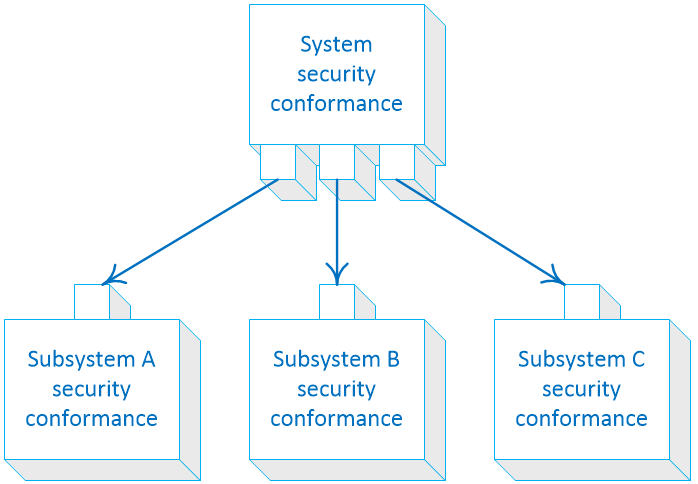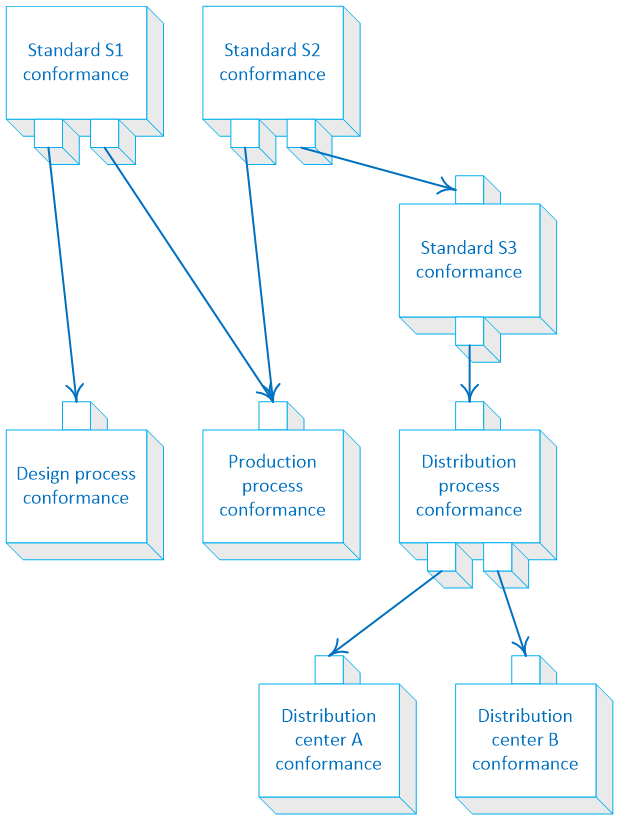Scaling up with modules
Many standards overlap and have some common requirements that it would be useful to manage in one place. Often some parts of the conformance model for one standard could be reused to support conformance to another standard.
You can divide your conformance work into modules. Any module can publish selected goals on its interface to make them available for other conformance modules. For example you can divide conformance work for a system into separate tasks related to subsystems. Some conformance tasks are still defines on the system level in the system module presented o the top of conformance modules hierarchy below.

Often requirements of a standard can be mapped to the organization internal standards and business processes. When an organization maintains a compliance model of its own business process, it can be used to support compliance to external standards.
You may also use decomposition into conformance modules to distribute responsibilities through-out the organization.
Some organizations need to demonstrate compliance by subsidiary companies or suppliers. Separate conformance modules can be created to be managed by appointed persons, teams or companies

When some of the standards or the processes change we can identify which conformance modules are affected and manage the changes locally.
Conformance modules are an effective way to manage work in complex projects and maintain conformance.
Free user account
for one project
Assurance Case Best Practices Training
24.09.2025
View Demo projects
for selected standards
